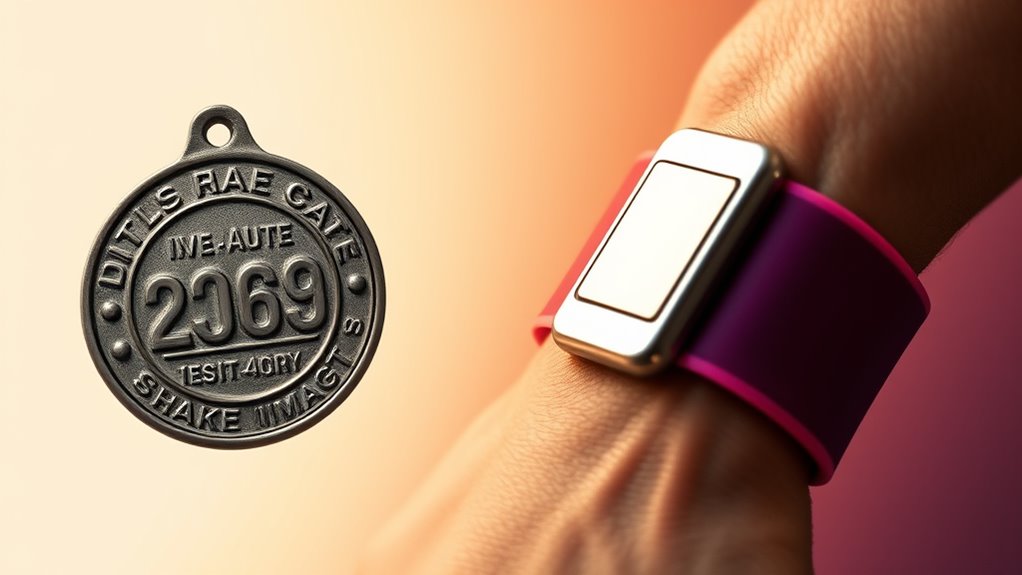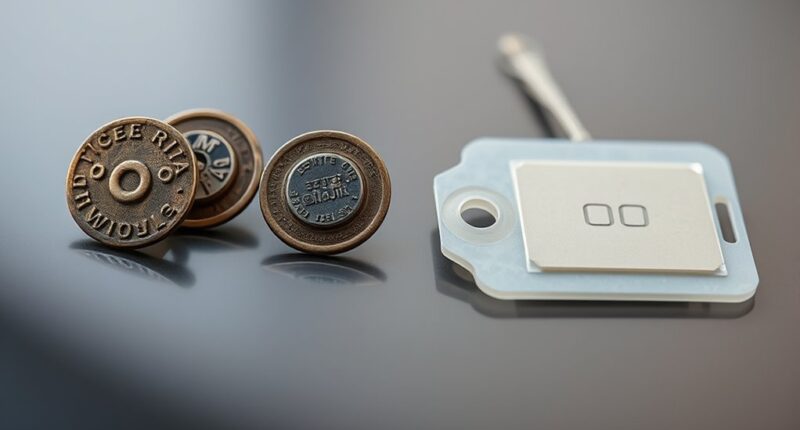You’ve seen race timings progress from manual pins and stopwatches to high-tech sensors and GPS devices. Early methods relied on human operators, which led to errors in close finishes. Photo finish cameras brought greater accuracy, while electronic sensors and chips automated the process, providing real-time data and detailed split times. Today, GPS and digital tools offer instant results and performance analytics. Keep exploring to see how these innovations keep pushing the limits of race timing precision.
Key Takeaways
- Early race timing relied on manual stopwatches, which were prone to human error and limited precision.
- The advent of photo finish technology in the early 20th century greatly improved accuracy for close race results.
- Electronic timing systems with sensors and transponders emerged in the mid-20th century, enabling automatic and real-time results.
- Timing chips embedded in athletes’ gear became popular in late 20th-century mass-participation events, enhancing data collection.
- Modern GPS-enabled devices and digital algorithms now provide instant tracking, detailed analytics, and real-time race results.

The way we measure race times has evolved considerably over the years, transforming from simple stopwatches to sophisticated digital systems. This progression reflects ongoing technology advancements that have continually improved accuracy and reliability. Early on, timing races relied heavily on manual methods, where timers used mechanical stopwatches to record finish times. These devices, while innovative at the time, were prone to human error, especially in high-stakes competitions where fractions of a second mattered. As sports grew more competitive, the need for precise timing became evident, leading to some key historical milestones.
Race timing has advanced from manual stopwatches to digital systems for greater accuracy and reliability.
One major milestone was the introduction of photo finish technology in the early 20th century. This method used high-speed cameras to capture runners crossing the finish line, allowing officials to determine exact times even when competitors finished very close together. The photo finish revolutionized race timing, reducing disputes and increasing accuracy. As technology advanced, the development of electronic timing systems in the mid-20th century further transformed the landscape. These systems employed sensors and transponders to automatically start and stop clocks as athletes crossed designated points on the track. Not only did this increase precision, but it also expedited the process, enabling real-time results.
The advent of timing chips in the late 20th century marked another significant milestone. Athletes began wearing transponder chips embedded in their shoes or bibs, allowing for instant, automatic recording of race times when passing specific sensors around the course. This technology dramatically improved timing accuracy in mass-participation events like marathons, where manual timing was impractical. Additionally, it facilitated detailed data collection, including split times and pacing information, which athletes and coaches could analyze to enhance performance.
Today, the integration of digital technology and GPS has taken race timing to new heights. Modern systems utilize GPS-enabled devices and sophisticated algorithms to provide real-time tracking and instant results displayed on screens or mobile apps. These advancements not only ensure precise timing but also enhance the athlete’s experience by offering immediate feedback and detailed analytics. The continuous evolution driven by technology advancements reflects a commitment to fairness, accuracy, and efficiency, making race timing more reliable than ever before. From the earliest stopwatches to today’s digital chips and GPS systems, each milestone has brought us closer to capturing every fraction of a second with unmatched precision, including the importance of accurate timing, shaping the way we compete and celebrate athletic achievement.
Frequently Asked Questions
How Do Race Timing Systems Ensure Accuracy During Events?
Race timing systems guarantee accuracy during events by using precise sensor calibration, which aligns timing equipment for consistent measurements. Signal synchronization is also key, as it guarantees all devices work together seamlessly, preventing timing errors. You’ll find that modern systems regularly calibrate sensors and synchronize signals in real-time, so every runner’s performance is captured accurately, providing fair and reliable results for everyone involved.
What Are the Environmental Impacts of Modern Timing Technologies?
You might worry modern timing tech harms the environment, but it actually minimizes impact. By using sustainable materials and energy-efficient devices, you reduce waste and energy consumption. Imagine race chips made from eco-friendly plastics or solar-powered systems that lower carbon footprints. These innovations help you enjoy precision timing while supporting sustainability efforts, ensuring that races are both accurate and environmentally responsible.
How Do Timing Systems Adapt to Different Race Formats?
You can adapt timing systems to various race formats by customizing interfaces to suit each event’s needs, whether running, cycling, or triathlon. These systems also face scalability challenges when handling different race sizes, from small local runs to large marathons. By updating software and hardware, you guarantee accurate timing and seamless data management, allowing your system to flexibly meet diverse race demands while maintaining reliability and precision.
What Are the Costs Associated With Implementing Advanced Timing Systems?
You might think advanced timing systems are too costly, but a proper cost analysis shows they’re worth it. Equipment expenses can be significant upfront, including sensors, transponders, and software, but these investments often pay off with more accurate results and smoother races. Maintenance and upgrades also factor in, yet the improved reliability and data quality make advanced systems a smart choice for race organizers aiming for precision.
How Is Data Security Maintained in Digital Race Timing?
You maintain data security in digital race timing by using cryptographic protocols and data encryption. These measures protect sensitive information like race times and participant data from unauthorized access. You also implement secure servers and access controls, regularly update software, and monitor for vulnerabilities. By actively applying these security practices, you guarantee that race data remains confidential and integrity is preserved throughout the event.
Conclusion
You’ve seen how race timing has transformed from tiny pins to sophisticated chips, revolutionizing the sport. This evolution isn’t just a step forward; it’s a leap into the future that’s faster than lightning and more precise than a surgeon’s scalpel. As technology keeps advancing, your races will become even more accurate and exciting. So, get ready—because the race against time is only speeding up, and you’re right in the middle of this incredible journey.









